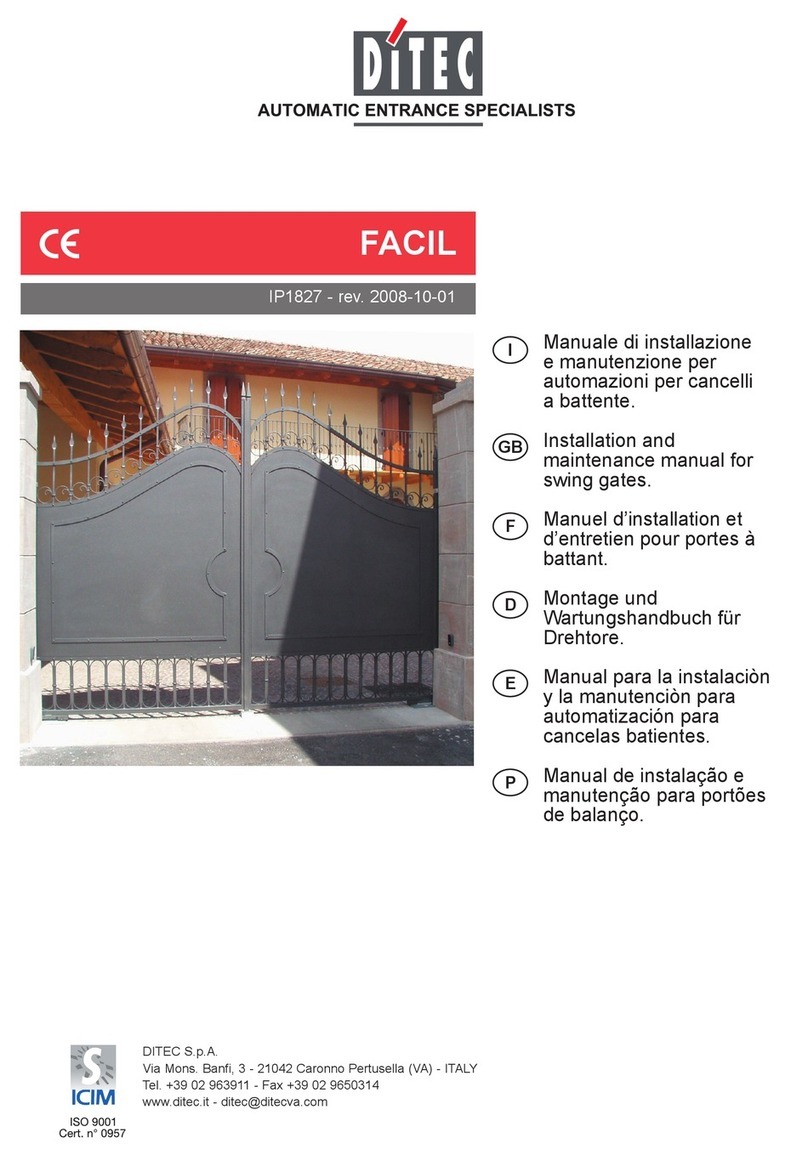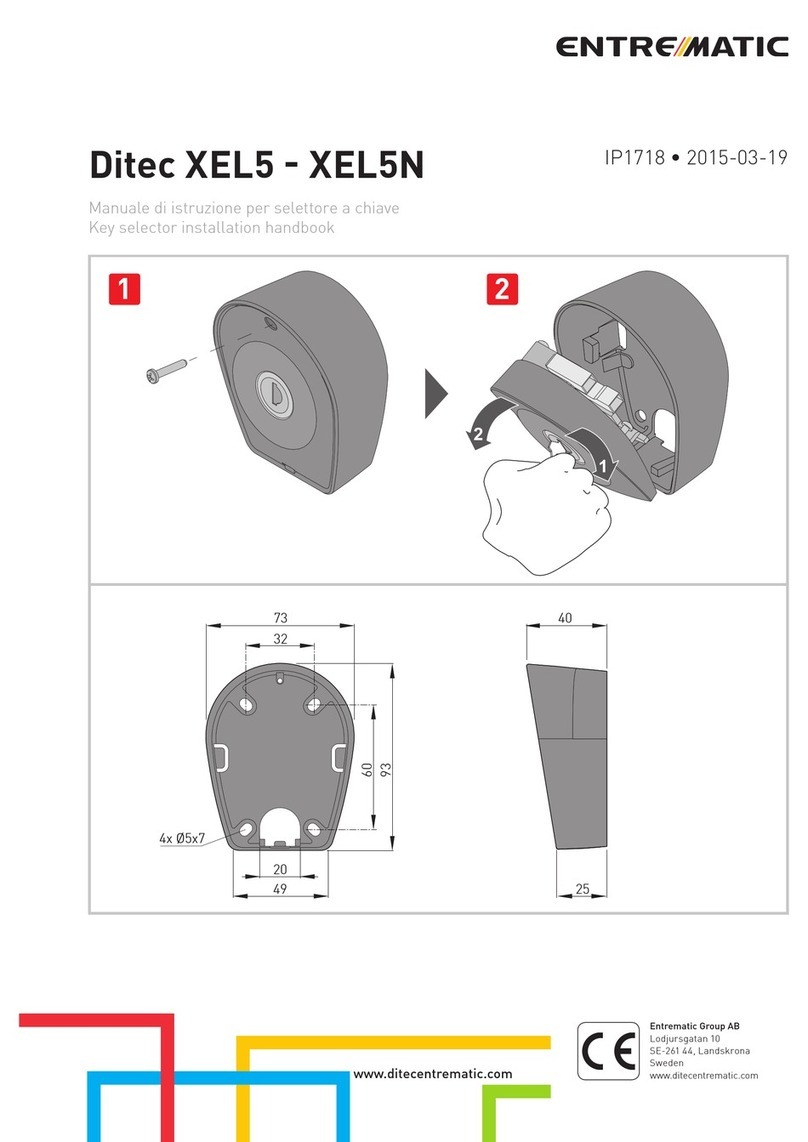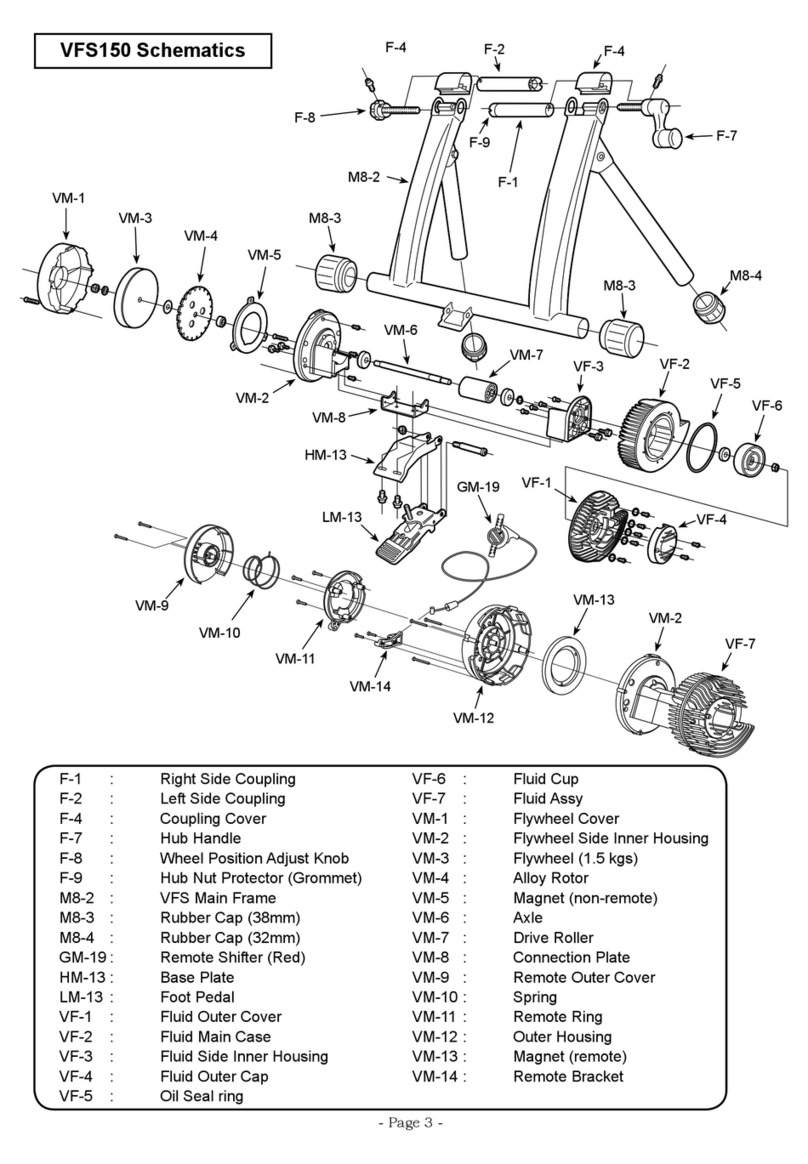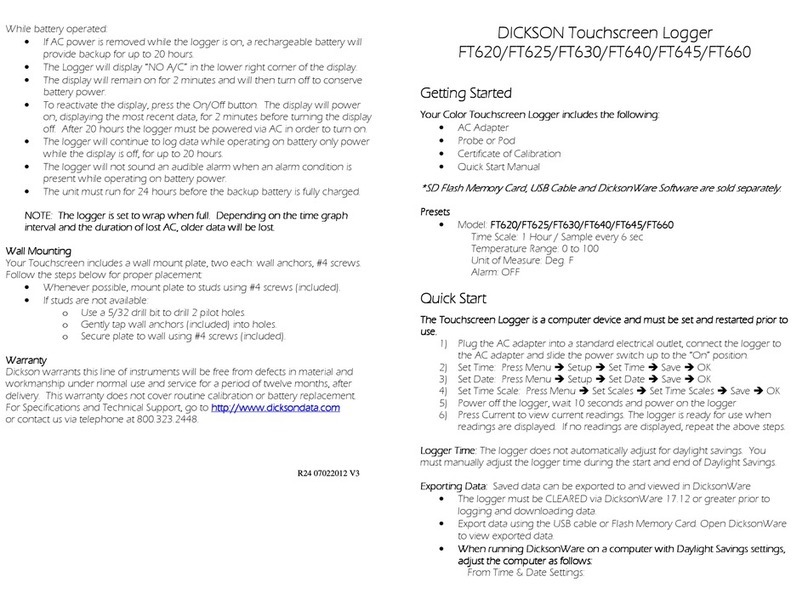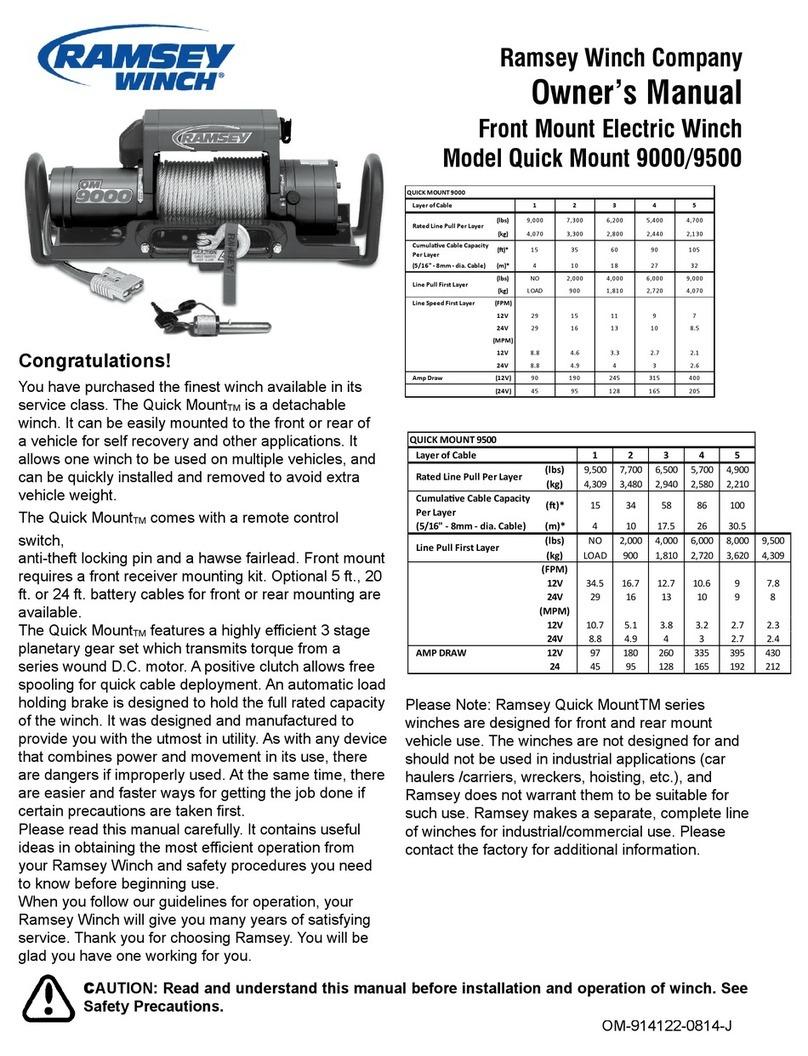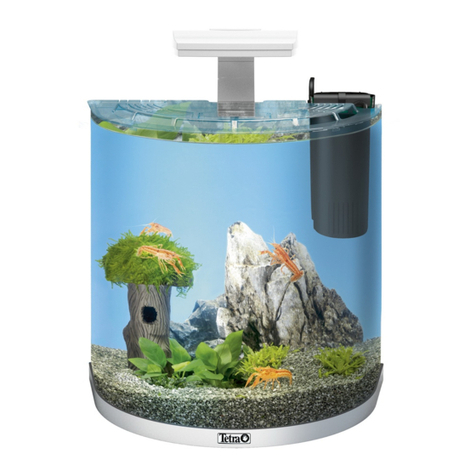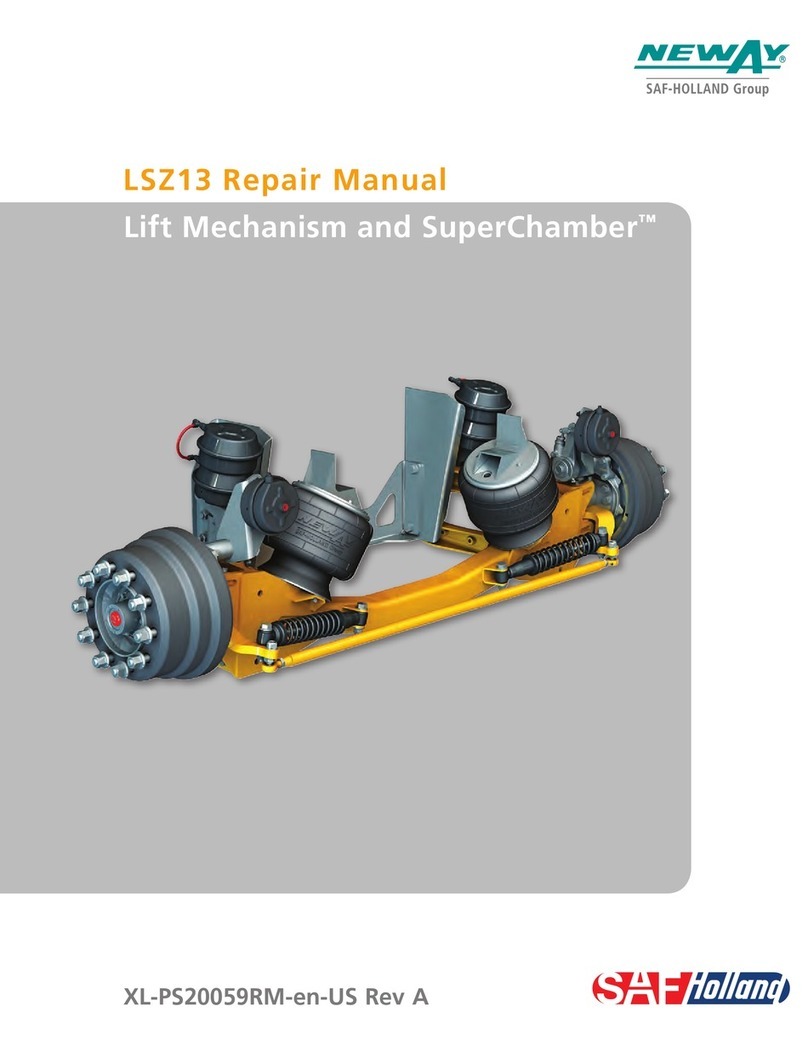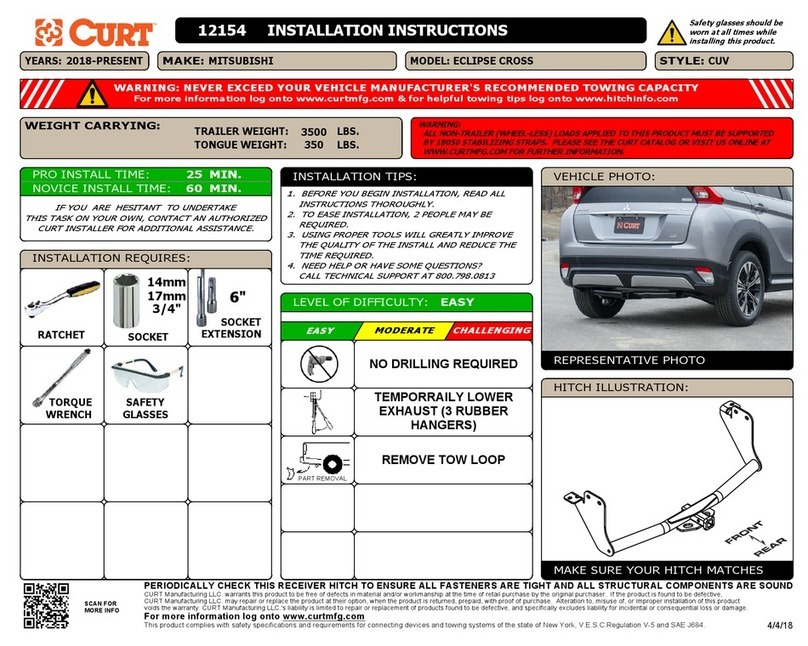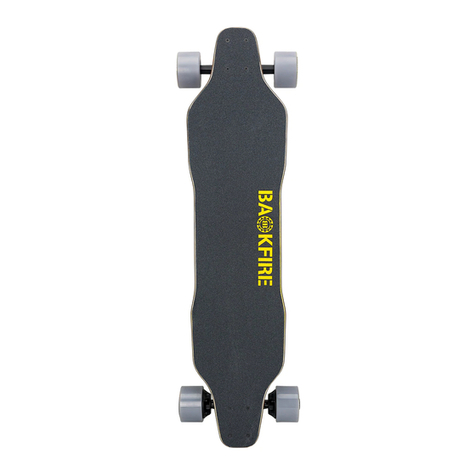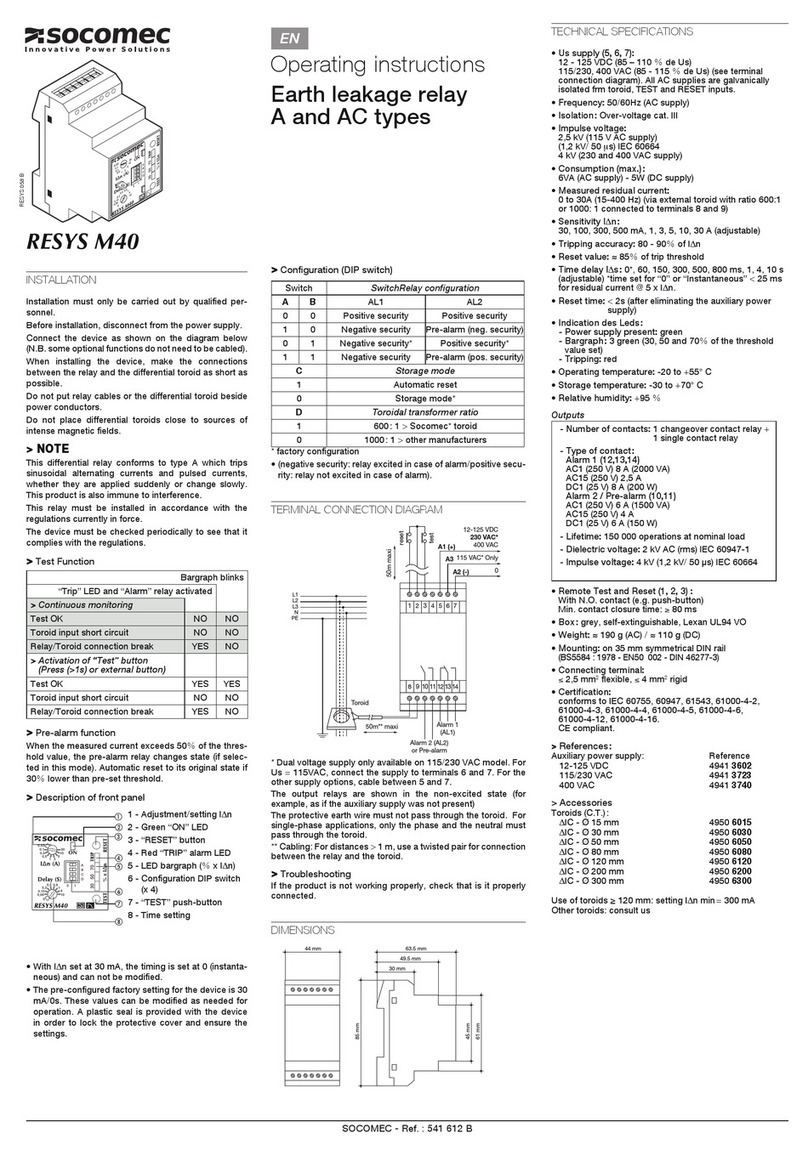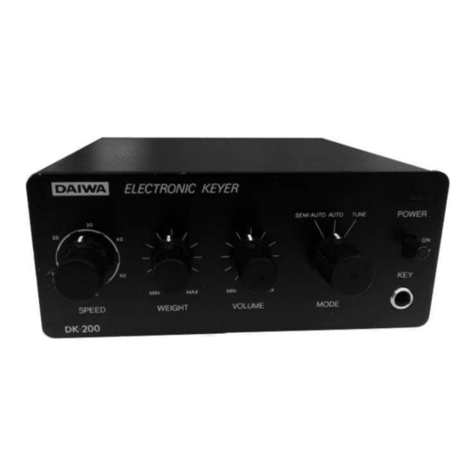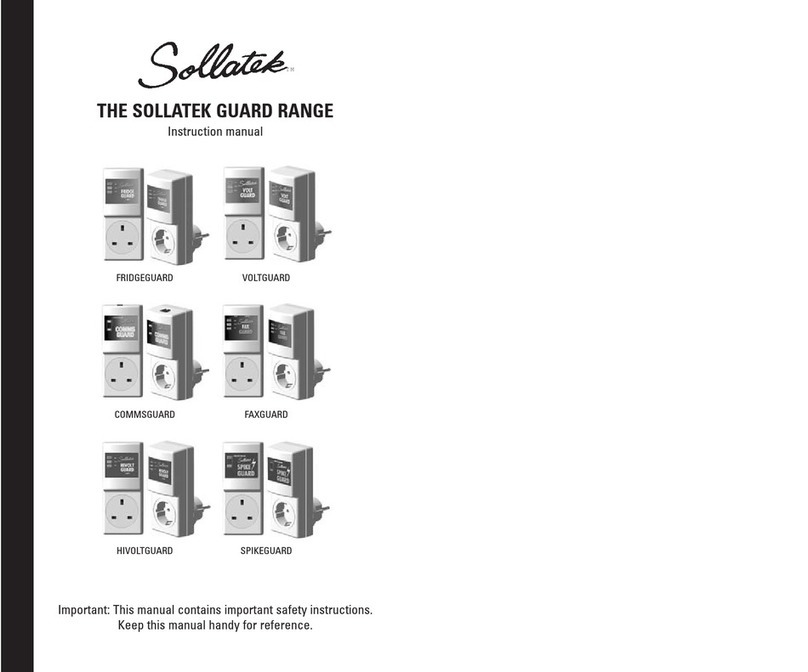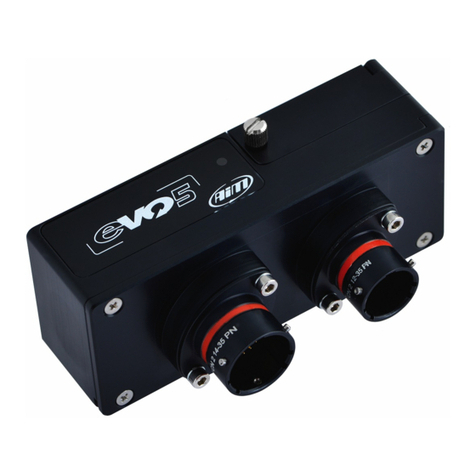DITEC OBBI3BH Manual

DITEC S.p.A.
Via Mons. Banfi, 3 - 21042 Caronno Pertusella (VA) - ITALY
Tel. +39 02 963911 - Fax +39 02 9650314
Manuale di installazione
e manutenzione per
automazioni per cancelli
a battente.
Installation and
Maintenance manual for
swing gates.
Manuel d’installation et
d’entretien pour portes à
battant.
Montage und
Wartungshandbuch für
Drehtorantriebe.
Manual para la instalaciòn
y la manutenciòn para
automatización para
cancelas batientes.
Instalação e Manutenção
manual para portões de
balanço.
OBBI3BH
IP1639 - rev. 2005-05-20
I
GB
F
D
E
P

2
Obbi 3BH - IP1639
Fig. 1
TX - 4x0.5 mm²
TX - 4x0.5 mm²
RX - 4x0.5 mm²
RX - 4x0.5 mm²
4x0.5 mm²
2x1.5 mm² 2x1.5 mm²
3x1.5 mm²
1
77
5
3
2
8
4
77
6
2x1.5 mm²
200
110
995
350
Corsa max. - Max. stroke -
Course max. - Max. Hub -
Carrera Max. - Max. golpe
13 12
11 910
Fig. 2

3Obbi 3BH - IP1639
68
100
14
15
A
B
C
min
120
L
D
E
BC
65
A 40
B
C
100
A 25
B
C
140
A
50 min
120
Esempio nr. 1 - Example nr. 1 - Exem-
ple nr. 1 - Beispiel Nr. 1 - Ejemplo nr. 1
- Exemplo n. 1
Esempio nr. 2 - Example nr. 2 - Exemple
nr. 2 - Beispiel Nr. 2 - Ejemplo nr. 2 -
Exemplo n. 1
Esempio nr. 3 - Example nr. 3 - Exemple
nr. 3 - Beispiel Nr. 3 - Ejemplo nr. 3 -
Exemplo n. 1
Fig. 3
Fig. 4 Fig. 5
AB
C max
(90°)
D
max EL
150 150 85 100° 75 910
120 160 95 100° 75 910
120 180 115 110° 75 910
160 120 55 110° 75 910

4
Obbi 3BH - IP1639
blue
brown
180°
blue
brown
Fig. 6 Fig. 7
Fig. 8
Fig. 9 Fig. 10

5Obbi 3BH - IP1639
36 34 33 31
CONTROL
PANEL
M1M2
Blue
Blue
36 34 33 31
M2M1
Blue
Blue
CONTROL
PANEL
Fig. 11
Fig. 12
48
60
40
11 16 14FG15
Ø16
12
10
N
13H
M
Fig. 13
Fig. 14

6
OBBI - IP1639
IAVVERTENZE GENERALI PER LA SICUREZZA
Il presente manuale di installazione è rivolto esclusiva-
mente a personale professionalmente competente.
L’installazione, i collegamenti elettrici e le regolazioni devono
essere effettuati nell’osservanza della Buona Tecnica e in ottem-
peranza alle norme vigenti. Leggere attentamente le istruzioni
prima di iniziare l’installazione del prodotto. Una errata instal-
lazione può essere fonte di pericolo. I materiali dell’imballaggio
(plastica, polistirolo, ecc.) non vanno dispersi nell’ambiente e
non devono essere lasciati alla portata dei bambini in quanto
potenziali fonti di pericolo. Prima di iniziare l’installazione veri-
ficare l’integrità del prodotto.
Non installare il prodotto in ambiente e atmosfera esplosivi:
presenza di gas o fumi infiammabili costituiscono un grave
pericolo per la sicurezza. Prima di installare la motorizzazione,
apportare tutte le modifiche strutturali relative alla realizzazione
dei franchi di sicurezza ed alla protezione o segregazione di
tutte le zone di schiacciamento, cesoiamento, convogliamento
e di pericolo in genere.
Verificare che la struttura esistente abbia i necessari requisiti
di robustezza e stabilità. Il costruttore della motorizzazione non
è responsabile dell’inosservanza della Buona Tecnica nella co-
struzione degli infissi da motorizzare, nonché delle deformazioni
che dovessero intervenire nell’utilizzo. I dispositivi di sicurezza
(fotocellule, coste sensibili, stop di emergenza, ecc.) devono
essere installati tenendo in considerazione: le normative e le
direttive in vigore, i criteri della Buona Tecnica, l’ambiente di
installazione, la logica di funzionamento del sistema e le forze
sviluppate dalla porta o cancello motorizzati. I dispositivi di si-
curezza devono proteggere eventuali zone di schiacciamento,
cesoiamento, convogliamento e di pericolo in genere, della porta
o cancello motorizzati. Applicare le segnalazioni previste dalle
norme vigenti per individuare le zone pericolose. Ogni installa-
zione deve avere visibile l’indicazione dei dati identificativi della
porta o cancello motorizzati. Prima di collegare l’alimentazione
elettrica accertarsi che i dati di targa siano rispondenti a quelli
della rete di distribuzione elettrica.
Prevedere sulla rete di alimentazione un interruttore/se-
zionatore onnipolare con distanza d’apertura dei contatti
uguale o superiore a 3 mm. Verificare che a monte dell’impianto
elettrico vi sia un interruttore differenziale e una protezione di
sovracorrente adeguati. Quando richiesto, collegare la porta o
cancello motorizzati ad un efficace impianto di messa a terra
eseguito come indicato dalle vigenti norme di sicurezza. Du-
rante gli interventi di installazione, manutenzione e riparazione,
togliere l’alimentazione prima di aprire il coperchio per accedere
alle parti elettriche.
La manipolazione delle parti elettroniche deve essere
effettuata munendosi di bracciali conduttivi antistatici
collegati a terra.
Il costruttore della motorizzazione declina ogni responsabilità
qualora vengano installati componenti incompatibili ai fini della
sicurezza e del buon funzionamento.
Per l’eventuale riparazione o sostituzione dei prodotti dovranno
essere utilizzati esclusivamente ricambi originali.
L’installatore deve fornire tutte le informazioni relative al fun-
zionamento automatico, manuale e di emergenza della porta o
cancello motorizzati, e consegnare all’utilizzatore dell’impianto
le istruzioni d’uso.
DIRETTIVA MACCHINE
Ai sensi della Direttiva Macchine (98/37/CE) l’installatore che
motorizza una porta o un cancello ha gli stessi obblighi del
costruttore di una macchina e come tale deve:
- predisporre il fascicolo tecnico che dovrà contenere i docu-
menti indicati nell’Allegato V della Direttiva Macchine;
(Il fascicolo tecnico deve essere conservato e tenuto a
disposizione delle autorità nazionali competenti per almeno
dieci anni a decorrere dalla data di costruzione della porta
motorizzata);
- redigere la dichiarazione CE di conformità secondo l’Allegato
II-A della Direttiva Macchine;
- apporre la marcatura CE sulla porta motorizzata ai sensi del
punto 1.7.3 dell’Allegato I della Direttiva Macchine.
Per maggiori informazioni consultare le “Linee guida per la
realizzazione del fascicolo tecnico” disponibile su internet al
seguente indirizzo: http://www.ditec.it
INDICAZIONI DI UTILIZZO
OBBI3BH
Classe di servizio: 3 (minimo 10÷5 anni di utilizzo con 30÷60
cicli al giorno).
Utilizzo: FREQUENTE (per ingressi di tipo plurifamiliare o pic-
colo condominiale con uso carraio o pedonale frequente).
- Le prestazioni di utilizzo si riferiscono al peso raccomandato
(circa 2/3 del peso massimo consentito). L’utilizzo con il peso
massimo consentito potrebbe ridurre le prestazioni sopra
indicate.
- La classe di servizio, i tempi di utilizzo e il numero di cicli con-
secutivi hanno valore indicativo. Sono rilevati statisticamente
in condizioni medie di utilizzo e non possono essere certi per
ogni singolo caso. Si riferiscono al periodo nel quale il prodotto
funziona senza necessità di manutenzione straordinaria.
- Ogni ingresso automatico presenta elementi variabili quali:
attriti, bilanciature e condizioni ambientali che possono mo-
dificare in maniera sostanziale sia la durata che la qualità di
funzionamento dell’ingresso automatico o di parte dei suoi
componenti (fra i quali gli automatismi). E’ compito dell’in-
stallatore adottare coefficienti di sicurezza adeguati ad ogni
particolare installazione.
DICHIARAZIONE DEL FABBRICANTE
(Direttiva 98/37/CE, Allegato II, parte B)
Fabbricante: DITEC S.p.A.
Indirizzo: via Mons. Banfi, 3 - 21042 Caronno Pertusella
(VA) - ITALY
Dichiara che l’automazione per cancelli a battente serie OBBI
- è costruito per essere incorporato in una macchina o per
essere assemblato con altri macchinari per costituire una
macchina considerata dalla Direttiva 98/37/CE;
- è conforme alle condizioni delle seguenti altre direttive CE:
Direttiva compatibilità elettromagnetica 89/336/CEE;
Direttiva bassa tensione 73/23/CEE;
e inoltre dichiara che non è consentito mettere in servizio il
macchinario fino a che la macchina in cui sarà incorporata o
di cui diverrà componente sia stata identificata e ne sia stata
dichiarata la conformità alle condizioni della Direttiva 98/37/CE
e alla legislazione nazionale che la traspone.
Caronno Pertusella, 12/02/1998
Fermo Bressanini
(Presidente)

7OBBI - IP1639
I
1. DATI TECNICI Obbi 3BH
Alimentazione 24 V=
Assorbimento 3 A
Potenza motore 24 W
Spinta 1500 N
Corsa massima 350 mm
Tempo corsa 25 s / 90°
Intermittenza S2= 30 min / S3= 50%
Temperatura -15° C / +50° C
Grado di protezione IP54
Dimensioni anta
m = lunghezza anta
kg = peso anta
Dimensioni
raccomandate
Dimensioni
limite
100 300 500
kg
1.0
2.0
3.0
4.0
5.0
m
2. RIFERIMENTI ILLUSTRAZIONI e ACCESSORI
La garanzia di funzionamento e le prestazioni dichiarate si otten-
gono solo con accessori e dispositivi di sicurezza DITEC.
2.1 Riferimenti installazione tipo (fig. 1)
[1] Radio
[2] Lampeggiante
[3] Selettore a chiave
[4] Collegare l’alimentazione ad un interruttore onnipolare con
distanza d’apertura dei contatti di almeno 3 mm (non di
nostra fornitura) protetto contro l’attivazione involontaria
e non autorizzata.
[5] Motoriduttore destro
[6] Motoriduttore sinistro
[7] Fotocellule
[8] Quadro elettrico
2.2 Riferimenti motoriduttore (fig. 2-4)
[9] Sblocco
[10] Carter
[11] Tubo di traino
[12] Copri tubo
[13] Tappo chiusura
[14] Staffa di coda
[15] Staffa di testa
[16] Staffa aggancio guaina passacavi
3. INSTALLAZIONE
3.1 Controlli preliminari
Controllare che la struttura del cancello sia robusta e che i cardini
siano lubrificati. Prevedere una battuta d’arresto in apertura e
in chiusura.
Installazione motoriduttore
Tutte le misure riportate sono espresse in mm, salvo diversa
indicazione.
3.2 Verificare le misure di installazione (fig. 3) in funzione della
distanza tra il cardine dell’anta e lo spigolo del pilastro [C]
e dell’angolo di apertura desiderato [D].
3.3 Di serie il motoriduttore viene fornito destro, per trasformarlo
in motoriduttore sinistro procedere come segue (vedi da
fig. 6 a fig. 10):
- Svitare le viti di fissaggio motore (fig 6).
- Estrarre il motore, il tappo del riduttore e sfilare il cavo
motore (fig. 7).
- Ruotare di 180° il riduttore (fig. 8).
- Con il riduttore ruotato, inserire il motore, il tappo e infilare
il cavo (fig. 9).
Attenzione: il motore deve essere montato in modo che il
cavo rimanga dalla parte opposta dello sblocco.
- Inserire e fissare le viti di fissaggio motore (fig. 10).
3.4 Fissare la staffa di coda [14] (fig. 4) rispettando le misure
[A] e [B] (riportate in fig. 3) in funzione dell’angolo di apertura
desiderato [D] . Sulla staffa di coda sono presenti delle
forature che agevolano il montaggio (fig. 5).
N.B: Le misure di installazione indicate nella tabella di fig. 3
consentono di scegliere i valori di [A] e [B] in base all’angolo di
apertura desiderato e in riferimento agli spazi e agli ingombri
presenti in sito. Si consiglia di rispettare la misura evidenziata
in tabella, eventualmente modificando gli staffaggi in dotazio-
ne. Per avere un movimento regolare del cancello [A] e [B]
devono essere uguali. Aumentando [A] si riduce la velocità di
accostamento in apertura. Aumentando [B] si riduce la velocità
di accostamento in chiusura e si aumenta la resistenza allo
scasso. Riducendo [B] si aumentano i gradi di apertura del can-
cello. Le misure [A] e [B] devono comunque essere compatibili
con la corsa utile del pistone; quindi se si aumenta [A] bisogna
diminuire [B] e viceversa.
3.5 Fissare il pistone sulla staffa di coda [14] con il perno [F]
in dotazione (fig. 11).
3.6 Allungare completamente il tubo di traino [11] fino alla
massima lunghezza e accorciarlo di circa 20 mm (vedi
misura [L] in fig. 3).
Attenzione: Le battute di arresto devono mantenere un
margine di corsa del tubo di traino di 10 mm sia in posizione
di anta chiusa che di anta aperta.
3.7 Con cancello completamente chiuso posizionare la staffa
di testa [15], verificare che sia allineata a quella di coda
(fig. 4) e fissarla al cancello.
3.8 Fissare il pistone alla staffa di coda mediante il perno [G]

8
OBBI - IP1639
Iin dotazione (fig. 11). Per un corretto funzionamento i
motoriduttori devono essere montati con il carter motore
in alto.
3.9 Sbloccare il motoriduttore (vedi Operazione di SBLOC-
CO/BLOCCO) e verificare, muovendo manualmente il
cancello, che tutta la corsa avvenga senza interferenze.
Lubrificare leggermente gli snodi posteriori e anteriori.
3.10 Assemblare il copri tubo [12] con il tappo [13] e la guarni-
zione e fissarlo con le viti [H] e [M] in dotazione (fig. 12).
Attenzione al verso di inserimento. Le feritoie presenti sul
tappo di chiusura [13] devono trovarsi sulla parte inferiore
in modo da favorire la fuori uscita d’acqua.
3.11 Montare il carter [10] fissandolo con la vite [N], facendo
attenzione alla posizione del cavo.
4. COLLEGAMENTI ELETTRICI
I collegamenti elettrici e l’avviamento del pistone Obbi 3BH sono
illustrati in figura 13 e 14 e nei manuali di installazione del quadro
elettonico D2H e Logic C22/C22S.
5. PIANO DI MANUTENZIONE (ogni 6 mesi)
Senza alimentazione 230 V~ e batterie se presenti:
- Lubrificare gli snodi anteriori e posteriori del pistone.
- Lubrificare le cerniere del cancello.
- Controllare il buono stato dei collegamenti elettrici.
- Controllare il serraggio delle viti di fissaggio del motoridut-
tore.
Ridare alimentazione 230 V~ e batterie:
- Verificare le regolazioni di forza.
- Controllare il corretto funzionamento di tutte le funzioni di
comando e le sicurezze (fotocellule).
- Controllare il corretto funzionamento del sistema di sbloc-
co.
ATTENZIONE: Per le parti di ricambio fare riferimento al listino
ricambi.
Tutti i diritti sono riservati
I dati riportati sono stati redatti e controllati con la massima
cura. Tuttavia non possiamo assumerci alcuna responsabilità
per eventuali errori, omissioni o approssimazioni dovute ad
esigenze tecniche o grafiche.

PISTONE DESTRO
PISTONE SINISTRO
I
ISTRUZIONI D’USO AUTOMAZIONE PER CANCELLI BATTENTI OBBI
DITEC S.p.A.
Via Mons. Banfi, 3
21042 Caronno Pertusella (VA) - ITALY
Tel. +39 02 963911 - Fax +39 02 9650314
Installatore:
ON
OFF
Attenzione: Eseguire le operazioni di blocco e sblocco ante a
motore fermo.
ISTRUZIONI DI SBLOCCO
In caso di guasto o in mancanza di tensione, sbloccare l’even-
tuale elettroserratura, inserire la chiave e ruotarla in senso
antiorario (come indicato dalla freccia sul motoridutore). Aprire
manualmente il cancello.
ISTRUZIONI DI BLOCCO
Per ribloccare le ante girare la chiave in senso orario (in senso
contrario alla freccia sul motoriduttore). Per facilitare l’operazio-
ne, muovere leggermente l’anta.
AVVERTENZE GENERALI PER LA SICUREZZA
Le presenti avvertenze sono parte integrante ed essenzia-
le del prodotto e devono essere consegnate all’utilizzatore.
Leggerle attentamente in quanto forniscono importanti indicazio-
ni riguardanti la sicurezza di installazione, uso e manutenzione.
È necessario conservare queste istruzioni e trasmetterle ad
eventuali subentranti nell’uso dell’impianto.
Questo prodotto dovrà essere destinato solo all’uso per il quale
è stato espressamente concepito. Ogni altro uso è da consi-
derarsi improprio e quindi pericoloso. Il costruttore non può
essere considerato responsabile per eventuali danni causati
da usi impropri, erronei ed irragionevoli. Evitare di operare in
prossimità delle cerniere o organi meccanici in movimento. Non
entrare nel raggio di azione della porta o cancello motorizzati
mentre è in movimento.
Non opporsi al moto della porta o cancello motorizzati poiché
può causare situazioni di pericolo. Non permettere ai bambini di
giocare o sostare nel raggio di azione della porta o cancello mo-
torizzati. Tenere fuori dalla portata dei bambini i radiocomandi e/o
qualsiasi altro dispositivo di comando, per evitare che la porta o
cancello motorizzati possa essere azionata involontariamente.
In caso di guasto o di cattivo funzionamento del prodotto, disin-
serire l’interruttore di alimentazione, astenendosi da qualsiasi
tentativo di riparazione o di intervento diretto e rivolgersi solo a
personale professionalmente competente.
Il mancato rispetto di quanto sopra può creare situazioni di
pericolo.
Qualsiasi intervento di pulizia, manutenzione o riparazione, deve
essere effettuato da personale professionalmente competente.
Per garantire l’efficienza dell’impianto ed il suo corretto funziona-
mento è indispensabile attenersi alle indicazioni del costruttore
facendo effettuare da personale professionalmente competente
la manutenzione periodica della porta o cancello motorizzati.
In particolare si raccomanda la verifica periodica del corretto
funzionamento di tutti i dispositivi di sicurezza. Gli interventi
di installazione, manutenzione e riparazione devono essere
documentati e tenuti a disposizione dell’utilizzatore.
DA STACCARE E CONSEGNARE ALL’UTILIZZATORE

10
OBBI - IP1639
GB GENERAL SAFETY PRECAUTIONS
This installation manual is intended for professionally
competent personnel only.
The installation, the electrical connections and the settings must
be completed in conformity with good workmanship and with the
laws in force. Read the instructions carefully before beginning
to install the product. Incorrect installation may be a source of
danger. Packaging materials (plastics, polystyrene, etc) must
not be allowed to litter the environment and must be kept out of
the reach of children for whom they may be a source of danger.
Before beginning the installation check that the product is in
perfect condition. Do not install the product in explosive areas and
atmospheres: the presence of flammable gas or fumes represents
a serious threat to safety.
Before installing the motorisation device, make all the structural
modifications necessary in order to create safety clerance and
to guard or isolate all the compression, shearing, trapping and
general danger areas. Check that the existing structure has
the necessary strength and stability. The manufacturer of the
motorisation device is not responsible for the non-observance
of workmanship in the costruction of the frames to be motorised
, nor for deformations that may be occur during use. The safety
devices (photoelectric cells, mechanical obstruction sensor,
emergency stop, etc) must be installed taking into account: the
provisions and the directives in force, good workmanship crite-
ria, the installation area, the funtional logic of the system and
the forces developed by the motorised door or gate. The safety
devices must protect against compression, shearing, trapping
and general danger areas of the motorized door or gate. Display
the signs required by law to identify danger areas. Each instal-
lation must bear a visible indication of the data identifying the
motorised door or gate.
Before connecting to the mains check that the rating is
correct for the destination power requirements.
A multipolar isolation switch with minimum contact gaps of 3 mm
must be included in the mains supply.
Check that upstream of the electrical installation there is an
adequate differential switch and a suitable circuit breaker.
When requested, connect the motorized door or gate to an
effective earthing system carried out as indicated by current
safety standards. During installation, maintenance and repair
operations, cut off the power supply before opening the cover
to access the electrical parts.
The electronic parts must be handled using earthed anti-
static conductive arms. The manufacturer of the motorising
device declines all responsability in cases where components
which are incompatible with the safe and correct operation of
the product only original spare parts must be used. For repairs or
replacements of products only original spare parts must be used.
The fitter must supply all information corcerning the automatic,
the manual and emergency operation of the motorised door or
gate, and must provide the user the device with the operating
instructions. It is recommended that antistatic conductive earthed
arm bands be worn when manipulating electronic parts.
MACHINE DIRECTIVE
Pursuant to Machine Directive (98/37/EC) the installer who mo-
torises a door or gate has the same obligations as a machine
manufacturer and shall:
- prepare technical documentation containing the documents
indicated on Schedule V of the Machine Directive;
(The technical documentation shall be kept and placed at the
disposal of competent national authorities for at least ten years
starting on the date of manufacture of the motorised door);
- draw up the EC declaration of conformity according to Sche-
dule II-A of the Machine Directive;
- affix the CE mark on the motorised door pursuant to para.
1.7.3 of Schedule I of the Machine Directive.
For more details, refer to the “Guidelines for producing technical
documentation” available on Internet at the following address:
www.ditec.it
APPLICATIONS
OBBI3BH
Service life: 3 (minimum 10÷5 years of working life with 30÷60
cycles a day)
Applications: FREQUENT (For vehicle or pedestrian accesses
to town houses or small condominiums with frequent use).
- Performance characteristics are to be understood as refer-
ring to the recommended weight (approx. 2/3 of maximum
permissible weight). A reduction in performance is to be ex-
pected when the access is made to operate at the maximum
permissible weight.
- Service class, running times, and the number of consecutive
cycles are to be taken as merely indicative having been statisti-
cally determined under average operating conditions, and are
therefore not necessarily applicable to specific conditions of
use. During given time spans product performance character-
istics will be such as not to require any special maintenance.
- The actual performance characteristics of each automatic
access may be affected by independent variables such as
friction, balancing and environmental factors, all of which
may substantially alter the performance characteristics of the
automatic access or curtail its working life or parts thereof
(including the automatic devices themselves). When setting
up, specific local conditions must be duly borne in mind and
the installation adapted accordingly for ensuring maximum
durability and trouble-free operation.
DECLARATION BY THE MANUFACTURER
(Directive 98/37/EC, Annex II, sub B)
Manufacturer: DITEC S.p.A.
Address: via Mons. Banfi, 3
21042 Caronno Pertusella (VA) - ITALY
Herewith declares that the electromechanical automatic system
series OBBI:
- is intended to be incorpored into machinery or to be assem-
bled with other machinery to constitute machinery convered
by Directive 98/37/EC;
- is in conformity with the provisions of the following other EEC
directives:
Electromagnetic Compatibility Directive 89/336/EEC;
Low Voltage Directive 73/23/EEC;
and furthermore declares that it is not allowed to put the machinery
into service until the machinery into which it is to be incorporated
or of which it is to be a component has been found and declared
to be in conformity with the provisions of Directive 98/37/EC and
with national implementing legislation.
Caronno Pertusella, 12/02/1998
Fermo Bressanini
(Chairman)

GB
11 CUBIC - IP1639
1. TECHNICAL DATA Obbi 3BH
Power supply 24 V=
Absorption 3 A
Motor power 24 W
Geared motor torque 1500 N
Max. stroke 350 mm
Stroke time 25 s / 90°
Intermittence S2= 30 min / S3= 50%
Temperature -15° C / +50° C
Degree of protection IP54
Wing dimension
m = door width
kg = door weight
Reccomended
dimensions
Limit
dimensions
100 300 500
kg
1.0
2.0
3.0
4.0
5.0
m
2. REFERENCE TO ILLUSTRATION
The given operating and performance features can only be guar-
anteed with the use of DITEC accessories and safety devices.
2.1 Standard installation references (fig. 1)
[1] Radio
[2] Flashing light
[3] Key selector
[4] Connect power supply to a type-approved omnipolarswitch
with a contact opening gap of no less that 3 mm (not sup-
plied by us) protected against accidental and unauthorized
activation.
[5] Right geared motor
[6] Left geared motor
[7] Photocells
[8] Electric board
2.2 Geared motor reference (fig. 2-4)
[9] Release
[10] Housing
[11] Draft tube
[12] Tube cover
[13] Closing plug
[14] Tail bracket
[15] Head bracket
[16] Cable guide sheat hooking bracket
3. INSTALLATION
3.1 Preliminary checks
Check that the structure is sufficiently sturdy and that the hinge
pivots are properly lubricated. Provide an opening and closing
stop.
Geared motor installation
Unless otherwise specified, all measurements are expressed
in millimetres.
3.2 Check the mounting dimensions (fig. 3) as a function of
the distance between the wing hinge pivot and the edge
of pillar [C] and of the desired opening angle [D].
3.3 The geared motor is normally supplied in the right-handed
version. To convert it to the left-handed version, proceed
as follows (see from Figs. 6 to 10):
- Loosen the motor clamping screws (Fig. 6).
- Remove the motor and the reduction gear plug, and slide
out the motor cable (Fig. 7).
- Rotate the reduction gear by 180 degrees (Fig. 8).
- With the reduction gear in this position, fit in the motor
and the plug and route the cable in (Fig. 9).
Attention: Take care to mount the motor so that the cable
comes to be on the opposite side of the release.
- Fit in and secure the motor clamping screws (Fig. 10).
3.4 Secure the tail bracket [14] (Fig. 4) according to dimensions
[A] and [B] (shown in Fig. 3) selected as a function of the
desired opening angle [D]. The tail bracket is provided
with holes to facilitate mounting (fig. 5).
Note: The installation measurements given in the table in Figure
3 permit to select the values for [A] and [B] according to the
desired opening angle and with reference to existing room and
spaces. Compliance with the
measurement given in the table is recommended, modifying the
brackets provided, if so required.
In order to ensure smooth gate movement, check that meas-
urements [A] and [B] are the same. Increasing [A] reduces the
coming up speed during opening. Increasing [B] diminishes the
coming up speed during closing and improves burglar-proofing.
Reducing [B] increases the extent of gate opening. Measure-
ments [A] and [B] must in any case be compatible with the use-
ful travel of the piston so that; if [A] is increased, [B] must be
diminished and vice versa.
3.5 Fit the piston onto tail bracket [14] by means of the pin [F]
provided (fig. 11).
3.6 Unscrew the piston draft tube [11] out to its full length and
retighten it of approx. 20 mm (see dimension [L] of fig. 3).
Attention: The stops must be such as to ensure a draft
tube travel margin of 10 mm both with closed and open
gate wings.
3.7 When the gate is completely closed, position the head
bracket [15], check that it and tail bracket are perfectly
level and secure it to the gate (fig. 4).

12
OBBI - IP1639
GB 3.8 Fit the piston onto head bracket by means of the pin [G]
provided (fig.11). For correct operation, the geared motors
must be mounted with the motor housing at the top.
3.9 Release the geared motor (see RELEASING and LOCK-
ING Instructions) and move the gate by hand to check for
smooth movement throughout. Slightly lubricate front and
rear joints.
3.10 Fit the tube cover [12] with the plug [13] and gasket and
secure it to the geared motor by means of the screw [H]
and [M] provided (fig. 12). Fit properly, making sure that
the slits on the closing plug [13] are turned downwards so
as to favour water drain-off.
3.11 Secure the casing [10] into place by means of screw [N]
paying attention to the position of the wire (fig. 12).
4. ELECTRICAL CONNECTIONS
The electrical connections and the startup of the Obbi 3BH are
illustrated in fig. 13 and 14 and in the installation manuals of the
control panel D2H and Logic C22/C22S.
5. MAINTENANCE PROGRAM (each 6
months)
Power off (230 V~ mains and batteries, if installed):
- Lubricate front and rear joints.
- Lubricate the gate leaf hinges.
- Check the good conditions of the electric connection.
- Check that the fixing screws of the geared motor are firmly
tightened.
Power on 230 V~ mains and batteries:
- Check the power adjustment.
- Check the good operation of all command and safety func-
tions (photocells).
- Check the good operation of the release system.
ATTENTION: For spare parts, see the spares price list.
All right reserved
All data and specifications have been drawn up and checked
with the greatest care. The manufacturer cannot however take
any responsibility for eventual errors, ommisions or incomple-
te data due to technical or illustrative purposes

TEAR OFF AND DELIVER TO USER
GB
RIGHT PISTON
LEFT PISTON
INSTRUCTIONS FOR THE USE OF AUTOMATION FOR OBBI SWING GATES
DITEC S.p.A.
Via Mons. Banfi, 3
21042 Caronno Pertusella (VA) - ITALY
Tel. +39 02 963911 - Fax +39 02 9650314
Installer:
ON
OFF
Attention: Lock and release operations must be performed with
motor not running.
RELEASE INSTRUCTION
In case of faulty operation or power failure, unlock the electric
lock, if mounted, insert the key and rotate the key anticlockwise
(as indicated by the arrow on the geared motor). Manually slide
the gate open.
LOCK INSTRUCTION
To relock the wings, turn the key clockwise (counterwise to the
direction of the arrow on the geared motor). To facilitate the
operation, slightly move the gate wing.
GENERAL SAFETY PRECAUTIONS
The following precautions are an integral and essential
part of the product and must be supplied to the user. Read
them carefully as they contain important indications for the safe
installation, use and maintenance. These instruction must be
kept and forwarded to all possible future user of the system.
This product must be used only for that which it has been ex-
pressly designed. Any other use is to be considered improper
and therefore dangerous. The manufacturer cannot be held re-
sponsible for possible damage caused by improper, erroneous or
unreasonable use. Avoid operating in the proximity of the hinges
or moving mechanical parts. Do not enter the field of action of
the motorised door or gate while in motion.
Do not obstruct the motion of the motorised door or gate as this
may cause a situation of danger. Do not allow children to play or
stay within the field of action of the motorised door or gate. Keep
remote control or any other control devices out of the reach of
children, in order to avoid possible involuntary activation of the
motorised door or gate.
In case of break down or malfunctioning of the product, discon-
nect from mains, do not attempt to repair or intervene directly
and contact only qualified personnel.
Failure to comply with the above may create a situation of
danger.
All cleaning, maintenance or repair work must be carried out
by qualified personnel.
In order to guarantee that the system works efficiently and
correctly it is indispensable to comply with the manufacturer’s
indications thus having the periodic maintenance of the motori-
sed door or gate carried out by qualified personnel.
In particular regular checks are recommended in order to verify
that the safety devices are operating correctly. All installation,
maintenance and repair work must be documented and made
available to the user.

14
OBBI - IP1639
FCONSIGNES GENERALES DE SECURITE
Le présent manuel d’installation s’adresse exclusivement
à un personnel qualifié. L’installation, les branchements
électriques et les réglages doivent être effectués conformément
à la bonne pratique et aux normes en vigueur. Lire attentivement
les instructions avant de commencer l’installation du produit.
Une mauvaise installation peut être source de danger. Ne pas
jeter dans la nature les matériaux qui composent l’emballage
(plastique, polystyrène, etc.) et ne pas les laisser à la portée des
enfants car ils sont une source potentielle de danger. Avant de
commencer l’installation, vérifier l’intégrité du produit. Ne pas
installer le produit en atmosphère et environnement explosifs:
la présence de gaz ou de fumées inflammables constitue un
grave danger pour la sécurité. Avant d’installer la motorisation,
apporter toutes les modifications structurelles relatives à la réa-
lisation des distances minimales de sécurité et à la protection
ou séparation de toutes les zones d’écrasement, cisaillement,
entraînement et de danger en général. Vérifier que la structure
existante remplit les prescriptions de robustesse et stabilité. Le
fabricant de la motorisation décline toute responsabilité quant
à l’inobservation de la bonne pratique dans la construction des
portes et portails à motoriser, et aux déformations qui pourraient
se produire au cours de l’utilisation.
Les dispositifs de sécurité (cellules photoélectriques, bourrelets
sensibles, arrêt d’urgence, etc.) doivent être installés en tenant
compte: des réglementations et directives en vigueur, des règles
de la bonne pratique, de l’environnement d’installation, de la lo-
gique de fonctionnement du système et des forces développées
par la porte ou le portail motorisé.
Les dispositifs de sécurité doivent protéger toutes zones d’écra-
sement, cisaillement, entraînement et de danger en général,
de la porte ou du portail motorisé. Appliquer les signalisations
prévues par les normes en vigueur pour signaler les zones dan-
gereuses. L’indication des données d’identification de la porte
ou du portail motorisé doit être visible sur chaque installation.
Avant de mettre sous tension, s’assurer que les données figu-
rant sur la plaque signalétique correspondent à celles du
secteur. Prévoir sur le réseau d’alimentation un interrup-
teur/sectionneur omnipolaire avec une distance d’ouverture des
contacts égale ou supérieure à 3 mm. Vérifier la présence en
amont de l’installation électrique d’un disjoncteur différentiel et
d’une protection contre la surintensité adéquats. Si nécessaire,
raccorder la porte ou le portail motorisé à une installation de mise
à la terre réalisée conformément aux prescriptions des normes
de sécurité envigueur. Au cours des interventions d’installation,
entretien et réparation, couper l’alimentation avant d’ouvrir le
couvercle pour accéder aux parties électriques.
N’effectuer la manipulation des parties électroniques qu’après
s’être muni de bracelets conducteurs antistatiques reliés à later-
re. Le fabricant de la motorisation décline toute responsa-
bilité quant à la sécurité et au bon fonctionnement si des
composants incompatibles sont installés. En cas de réparation
ou de remplacement des produits, utiliser exclusivement les
pièces de rechange DITEC. L’installateur doit fournir toutes les
informations relatives au fonctionnement automatique, manuel
et d’urgence de la porte ou du portail motorisé, et remettre le
mode d’emploi à l’utilisateur de l’installation.
DIRECTIVE MACHINE
Selon la Directive Machine (98/37/CE) l’installateur qui “motori-
se” une porte ou un portail a les mêmes obligations du fabricant
d’une machine et donc il doit:
- prédisposer le dossier technique qui doit contenir les docu-
ments indiqués dans l’annex V de la Directive Machine.
(le dossier technique doit être gardé et tenu a dispositions
des organes de contrôle nationaux pour au moins dix ans
après la date de la fabrication de la porte motorisée);
- faire la déclaration CE de conformité selon l’annex II-A de
la Directive Machine et la remettre au client;
- afficher le marquage CE sur la porte motorisée selon le point
1.7.3.de l’annex I de la Directive Machine.
Pour tout renseignement complémentaire, consulter le document
“Lignes directrices pour la réalisation du fascicule technique”
disponible sur Internet á l’adresse suivante: www.ditec.it
MODE D’EMPLOI
OBBI3BH
Classe de service: 3 (minimum 10÷5 ans d’utilisation avec
30÷60 cycles par jour)
Utilisation: FREQUENT (Pour installations domestiques ou
petits immeubles avec passage pour véhicules ou passage
piétons fréquent).
- Les performances d’utilisation se réfèrent au poids recom-
mandé (environ 2/3 du poids maximum admis). L’utilisation
avec le poids maximum admis peut entraîner une diminution
des performances ci-dessus.
- La classe de service, les temps d’utilisation et le nombre de
cycles consécutifs sont donnés à titre indicatif. Il s’agit de
valeurs relevées statistiquement dans des conditions moyen-
nes d’utilisation, n’offrant donc pas une précision absolue
pour chaque cas spécifique. Ces valeurs se réfèrent à la
période pendant laquelle le produit fonctionne sans aucune
intervention d’entretien exceptionnel.
- Tout accès automatique présente des éléments variables
tels que: frottements, compensations et conditions envi-
ronnementales pouvant modifier fondamentalement aussi
bien la durée que la qualité de fonctionnement de l’accès
automatique ou d’une partie de ses éléments (entre autres,
les automatismes). L’installateur est tenu d’adopter des
coefficients de sécurité adaptés à chaque installation spé-
cifique.
DECLARATION DU FABRICANT
(Directive 98/37/CE, Annexe II, partie B)
Fabricant: DITEC S.p.A.
Adresse: via Mons. Banfi, 3
21042 Caronno Pertusella (VA) - ITALY
Déclare que le systéme série OBBI:
- est fabriquée pour être intégrée à une machine ou pour être
assemblée avec d’autres appareils pour constituer une machine
considérée par la Directive 98/37/CE;
- est conforme aux prescriptions des directives CE suivantes:
Directive compatibilité électromagnétique 89/336/CEE;
Directive basse tension 73/23/CEE;
et déclare en outre qu’il est interdit de mettre en service l’appareil
tant que la machine à laquelle il sera intégré ou dont il deviendra
un composant n’a pas été identifiée et tant que sa conformité
aux prescriptions de la Directive 98/37/CE et à la législation
nationale qui la transpose n’a pas été déclarée.
Caronno Pertusella, 12/02/1998
Fermo Bressanini
(Président)

F
15 OBBI - IP1639
1. DONNEES TECHNIQUES Obbi 3BH
Alimentation 24 V=
Absorption 3 A
Puissance moteur 24 W
Poussée 1500 N
Course max. 350 mm
Temps course 25 s / 90°
Intermittence S2= 30 min / S3= 50%
Temperateur -15° C / +50° C
Degré de protection IP54
Dimensions du vantail
m = longueur du vantail
kg = poids du vantail
Dimensions
recommandées
Dimensions
limite
100 300 500
kg
1.0
2.0
3.0
4.0
5.0
m
2. REFERENCES ILLUSTRATIONS et ACCES-
SOIRES
La garantie de fonctionnement et les performances spécifiées
ne s’obtiennent qu’avec les accessoires et les dispositifs de
sécurité DITEC.
2.1 Eléments de l’installation type (fig. 1)
[1] Radio
[2] Lampe clignotante
[3] Sélecteur à clé
[4] Relier l’alimentation à un interrupteur unipolaire avec
distance d’ouverture des contacts d’au moins 3 mm (non-
fourni par Ditec) protégé contre l’activation involontaire et
non autorisée.
[5] Motoréducteur droit
[6] Motoréducteur gauche
[7] Photocellules
[8] Armoire èlectrique
2.2 Elements du motoreducteur (fig. 2-4)
[9] Déblocage
[10] Couvercle
[11] Tube d’entraînement
[12] Couvre-tube
[13] Bouchon de fermeture
[14] Patte posterieure
[15] Patte antérieure
[16] Bride d’attache de la gaine passe-câble
3. INSTALLATION
3.1 Contrôles préliminaires
Contrôler que la structure est robuste et que les gonds sont
bien graissés. Prévoir une butée d’arrêt à l’ouverture et à la
fermeture.
Installation du motoreducteur
Toutes les mesures sont indiquées en mm, sauf indication
contraire.
3.2 Vérifier les mesures d’installation (fig. 3) en fonction de la
distance entre le gond du vantail et l’arête du pilier [C] et
de l’angle d’ouverture désiré [D].
3.3 En modèle standard, le motoréducteur est fourni en ver-
sion droite, pour le transformer en motoréducteur version
gauche, procéder comme suit (voir figures 6 à 10):
- Dévisser les vis de fixation du moteur (fig 6).
- Extraire le moteur, le bouchon du réducteur et sortir le
câble du moteur (fig. 7).
- Tourner le réducteur de 180° (fig. 8).
- Après avoir tourné le réducteur, placer le moteur, le bou-
chon et faire passer le câble (fig. 9).
Attention: le moteur doit être installé de sorte que le câble
se trouve sur le côté opposé au déverrouillage.
- Insérer et fixer les vis de fixation du moteur (fig. 10).
3.4 Fixer la patte posterieure [14] (fig. 4) en respectant les
mesures [A] et [B] choisies (indiquées sur la fig.3), selon
l’angle d’ouverture désiré [D]. La patte postérieure com-
porte des orifices qui facilitent le montage (fig. 5).
N.B: Les mesures d’installation indiquées dans le tableau de
la fig. 3 permettent de choisir les valeurs de [A] et [B] selon
l’angle d’ouverture désiré et par rapport aux espaces et aux
encombrements du site. Il est conseillé de respecter les mesu-
res indiquées dans le tableau, en modifiant éventuellement les
bridages fournis. Pour obtenir un mouvement régulier du portail,
[A] et [B] doivent être identiques. Si l’on augmente [A], on dimi-
nue la vitesse d’approche à l’ouverture. Si l’on augmente [B],
on diminue la vitesse d’approche à la fermeture et on augmente
la résistance à l’effraction. Si l’on diminue [B], on augmente
l’angle d’ouverture du portail. Les mesures [A] et [B] doivent
toujours être compatibles avec la course utile du piston, donc
si l’on augmente [A] il faut diminuer [B] et inversement.
3.5 Monter le motoréducteur sur la patte posterieure [14] avec
la goujon [F] fournis (fig. 11).
3.6 Dévisser complètement le tube d’entraînement [11] du
piston jusqu’à la longueur maximum et le visser d’environ
20 mm (voir dimensions de [L] dans la fig. 3).
Attention: Les butées d’arrêt doivent maintenir une tolé-
rance de course de tube d’entraînement de 10 mm, aussi
bien en position de vantail fermé que de vantail ouvert.
3.7 Lorsque le portail, est complètement fermé, positionner
la patte antérieure [15], vérifier si est bien de niveau avec
la patte posterieure (fig. 4) e fixer sur le portail.
3.8 Monter le motoréducteur sur la patte antérieure avec la

16
OBBI - IP1639
Fgoujon [G] fournis (fig. 11). Pour un bon fonctionnement,
les motoréducteurs doivent être montés avec le carter
moteur en haut.
3.9 Débloquer le motoréducteur (voir Opération de DEBLO-
CAGE/BLOCAGE) et vérifier, en manœuvrant le portail à
la main, si toute la course s’effectue sans interférences.
Graisser légèrement les articulations avant et arrière.
3.10 Assembler le couvre-tube [12] avec le bouchon [13] et le
joint et le fixer sur le motoréducteur avec les vis [H] et [M]
(fig. 12).
Attention au sens d’introduction. Les fentes situées sur
le capot de fermeture [13] doivent se trouver sur la partie
inférieure de façon à faciliter l’écoulement d’eau.
3.11 Monter le carter [10] en le fixant avec la vis [N], en faisant
attention à la position du câble (fig. 12).
4. RACCORDEMENTS ELECTRIQUES
Les raccordements électriques et la mise en service de Obbi
3BH sont illustrés dans les fig. 13 et 14 et dans les manuels
d’installation de l’armoire électrique D2H et Logic C22/C22S.
5. ENTRETIEN PERIODIQUE (tous les 6 mois)
Sans alimentation 230 V~ ni batteries:
- Graisser légèrement les articulations avant et arrière.
- Graisser les charniéres du portail.
- Contrôler le bon état des branchements électriques.
- Contrôler que les vis de fixation du motoréducteur soient
bien serrées.
Rétablir l’alimentation 230 V~ et les batteries:
- Contrôler les réglages de force.
- Contrôler le bon fonctionnement de toutes les fonctions
de commande et de sécurité (photocellules).
- Contrôler le bon fonctionnement du systéme de déver-
rouillage.
ATTENTION: pour les pièces de rechange, se reporter au
catalogue spécifique.
Touts droits reservés
Les informations mentionnées dans ce catalogue ont été con-
trolées avec la plus grande attention. Toutefois, nous déclinos
toute responsabilité en cas d’erreurs, omissions ou approxima-
tions dépendant d’exigences techniques ou graphiques.

PISTON DROITE
PISTON GAUCHE
MODE D’EMPLOI DE L’AUTOMATISME POUR PORTAILS BATTANTS OBBI
DITEC S.p.A.
Via Mons. Banfi, 3
21042 Caronno Pertusella (VA) - ITALY
Tel. +39 02 963911 - Fax +39 02 9650314
Installateur:
ON
OFF
Attention: pour effectuer les opérations de verrouillage et de
déverrouillage, le moteur doit être arrêté.
OPERATIONS DE DEBLOCAGE
En cas de panne ou de coupure de courant, déverrouiller l’éven-
tuelle serrure électrique, introduire la clé et tourner dans le sens
inverse des aiguilles d’une montre (comme indiqué par la flèche
située sur le motoréducteur). Ouvrir le portail à la main.
OPERATIONS DE BLOCAGE
Pour bloquer de nouveau les vantaux, tourner la clé dans le sens
des aiguilles d’une montre (dans le sens contraire de la fleche
située sur le motoréducteur). Pour faciliter l’opération, déplacer
légèrement le vantail.
CONSIGNES GENERALES DE SECURITE
Ces consignes sont partie intégrante et essentielle su
produit et doivent être remises à l’utilisateur. Lire ces
consignes attentivement, car alles contiennent des instruc-
tions concernant la sécurité de l’installation, de l’utilisation et de
l’entretien de cette installation. Il est indispensable de conserver
ces instructions et de les transmettre à d’autres utilisateurs
éventuels de cette installation.
Ce produit doit être destiné exclusivement à l’utilisation pour
laquelle il a été conçu. Toute autre utilisation est inappropriée et
par conséquent dangereuse. Le constructeur ne peut être tenu
pour responsable en cas d’éventuels dommages causés par une
utilisation inappropriée, erronée et irrationnelle. Eviter de manoe-
uvre à proximité des charniéres ou des organes mécaniques en
mouvement. Ne pas entrer dans le rayon d’action de la porte ou
du portail automatisés lorqu’ils sont en mouvement.
Ne pas s’apposer au mouvement de la porte ou du portail au-
tomatisés car cela peut être source de danger. Ne pas laisser
des enfants jouer ou se tenir dans la rajon d’action de la porte
ou du portail automatisés. Garder hors de la portée des enfants
les radiocommandes et/ou tout autre dispositif de commande,
afin d’eviter que la porte ou le portail automatisés puissent être
actionnés involontairement.
En cas de panne ou de mauvais fonctionnement du produit, dé-
brancher l’interrupteur de secteur ae s’abstenir de toute tentative
de réparation ou d’intervention directe. S’adresser uniquement
à un professionel compétent.
Le non-respect de ces instructions peut êre cause de danger.
Toute intervention de nettoyage, d’entretien ou de réparation
doit être effectuée par du personnel expérimenté et qualifié.
Afin de garantir l’efficacité du système et son fonctionnement
correct, il est indispensable d’observer les instructions du con-
structeur en s’adressant à un professionnel compétent pour
l’entretien périodique de la porte ou du portail automatisés.
Plus particulièrement, il est recommandè de procéder à une véri-
fication périodique du fonctionnement correct de tous les dispo-
sitifs Les opérations d’installation, entretien et réparation doivent
être documentés et tenus à la disposition de l’utilisateur.
A DETACHER ET REMETTRE A L’UTILISATEUR
F

18
OBBI - IP1639
DALLGEMEINE SICHERHEITSHINWEISE
Diese Montageanleitungen sind ausschließlich dem
Fachpersonal vorbehalten. Die Montage, elektrischen
Anschlüsse und Einstellungen sind unter Beachtung
der praktischen Verhaltensregeln und Einhaltung der gelten-
den Normen auszuführen. Lesen Sie die Anleitungen vor der
Montage des Produkts aufmerksam durch. Eine fehlerhafte
Montage kann zu ernsthaften Verletzungen und Sachschäden
führen. Die Verpackungsmaterialien (Kunststoff, Styropor
etc.) müssen sachgemäß entsorgt werden und dürfen nicht in
Kinderhände gelangen, da sie eine Gefahrenquelle darstellen
können. Überprüfen Sie das Produkt vor der Montage auf
Transportschäden. Montieren Sie das Produkt nicht in explo-
sionsfähiger Atmosphäre oder Umgebung: Das Vorhandensein
von entzündlichen Gasen oder Dämpfen bedeutet eine große
Gefahr. Nehmen Sie vor der Montage des Antriebs alle Ve-
ränderungen an der Struktur für die lichten Sicherheitsräume
und den Schutz bzw. die Abtrennung aller Quetsch-, Scher-,
Einzieh- und allgemeiner Gefahrenstellen. Stellen Sie sicher,
dass die vorhandene Struktur den nötigen Anforderungen im
Hinblick auf Robustheit und Stabilität entspricht. Der Hersteller
des Antriebs schließt eine Haftungsübernahme im Falle der
Nichtbeachtung der praktischen Verhaltensregeln bei der Ferti-
gung der zu motorisierenden Torprofile sowie von während des
Gebrauchs auftretenden Verformungen aus. Beachten Sie bei
der Montage der Schutzeinrichtungen (Lichtschranken, Kontak-
tleisten, Not-Stopps etc.) unbedingt die geltenden Normen und
Richtlinien, die Kriterien der praktischen Verhaltensregeln, die
Montageumgebung, die Betriebslogik des Systems und die von
der motorisierten Tür entwickelten Kräfte. Die Schutzeinrichtun-
gen müssen mögliche Quetsch-, Scher-, Einzieh- und allgemeine
Gefahrenstellen der motorisierten Tür sichern. Bringen Sie
die von den geltenden Vorschriften vorgesehenen Warn- und
Hinweiszeichen zur Kennzeichnung von Gefahrenstellen an.Bei
jeder Installation müssen die Identifikationsdaten der motorisier-
ten Tür an sichtbarer Stelle angebracht werden. Stellen Sie vor
dem elektrischen Anschluss sicher, dass die Angaben auf dem
Datenschild mit den Werten des Stromnetzes übereinstimmen.
Statten Sie das Versorgungsnetz mit einem allpoligen
Trennschalter mit Kontaktöffnungsabstand von minde-
stens 3 mm aus. Stellen Sie sicher, dass der elektrischen
Anlage ein geeigneter Fehlerstrom-Schutzschalter und ein Über-
stromschutz vorgeschaltet sind. Schließen Sie die motorisierte
Tür soweit erforderlich an eine normgerechte Erdungsanlage
an. Unterbrechen Sie während der Montage-, Wartungs- oder
Reparaturarbeiten die Stromzufuhr, bevor Sie den Deckel für
den Zugang zu den elektrischen Geräten öffnen.
Eingriffe an den elektronischen Geräten dürfen nur mit anti-
statischem geerdeten Armschutz vorgenommen werden. Der
Hersteller des Antriebs lehnt jede Haftung für die Instal-
lation von sicherheits- und betriebstechnisch ungeeigne-
ten Bauteilen ab. Bei Reparaturen oder Austausch der
Produkte dürfen ausschließlich Original-Ersatzteile verwendet
werden. Der Monteur ist verpflichtet, dem Betreiber der Anlage
alle erforderlichen Informationen zum automatischen, manuellen
und Notbetrieb der motorisierten Tür zu liefern und die Betrieb-
sanleitung auszuhändigen.
MASCHINENRICHTLINIE
Gemäß Maschinenrichtlinie (98/37/EG) ist der Installateur, der
eine Tür oder ein Tor motorisiert, den gleichen Verpflichtungen
unterlegen wie ein Maschinenhersteller und hat somit folgendes
zu tun:
- Erstellung der technischen Akte, welche die in Anlage V der
MR genannten Dokumente enthalten muß; (die technische
Akte ist aufzubewahren den nationalen Behörden mindens-
tens Jahre lang zur Verfügung zu halten. Diese Frist beginnt
mit dem Herstellungsdatum der motorisierten Tür);
- Aufsetzen der CE-Übereinstimmungserklärung gemäß An-
lage II-A der MR und Sie dem Kunden liefern;
- Anbringung der CE-Kennzeichnung an die motorisierte Tür
laut Punkt 1.7.3. der Anlage I der MR.
Für detailliertere Informationen siehe den „Leitfaden für die
Realisierung der technischen Broschüre“, erhältlich im Internet
unter der folgenden Adresse: www.ditec.it
HINWEISE ZUM GEBRAUCH
OBBI3BH
Betriebsklasse: 3 (Minimum 10÷5 Betriebsjahre bei 30÷60
Zyklen pro Tag)
Verwendung: HÄUFIG (Für Mehrfamilienhaus-Installationen
oder kleine Eigentumswohnanlagen mit häufig benutzten Ein-
fahrten oder Eingängen).
- Die effektiven Betriebsleistungen beziehen sich auf das
empfohlene Gewicht (2/3 des zulässigen Höchstgewichtes).
Die Verwendung mit dem zulässigen Höchstgewicht kann
die oben angegebenen Betriebsleistungen mindern.
- Die Betriebsklasse, die Betriebszeiten und die Anzahl aufein-
anderfolgender Zyclen sind Richtwerte. Sie wurden mit Hilfe
statistischer Verfahren unter normalen Betriebsbedingungen
ermittelt und können im Einzelfall abweichen. Die Werte
beziehen sich auf den Zeitraum, in dem das Produkt funkti-
onsfähig ist, ohne daß außerordentliche Wartungsarbeiten
erforderlich sind.
- Jede Automatikanlage weist veränderliche Faktoren auf:
Reibung, Ausgleichvorgänge sowie Umweltbedingungen
können sowohl die Lebensdauer als auch die Qualität der
Funktionweise der Automatikanlage oder einer ihrer Kom-
ponenten (wie z.B. die Automatiksysteme) grundlegend
ändern. Es ist Aufgabe des Installationstechnikers, für die
einzelne Situation entsprechende Sicherheitskoeffizienten
vorzusehen.
ERKLÄRUNG DES HERSTELLERS
(Richtlinie 98/37/EWG, Anhang II, Teil B)
Der Hersteller: DITEC S.p.A.
Anschrift: via Mons. Banfi, 321042 Caronno Pertusella
(VA) - ITALY
erklärt hiermit, dass der Drehtorantrieb Serie OBBI:
- in eine Maschine einzubauen bzw. mit anderen Maschi-
nenzusammenzubauen ist, um eine Maschine im Sinne der
Richtlinie 98/37/EWG darzustellen;
- folgenden einschlägigen EU-Richtlinien entspricht:
Richtlinie zur elektromagnetischen Verträglichkeit 89/336/
EWG; Niederspannungsrichtlinie 73/23/EWG,
und weist darauf hin, dass die Inbetriebnahme so lange un-tersa-
gt ist, bis festgestellt wurde, dass die Maschine, in diediese Ma-
schine eingebaut werden soll, den Bestimmungender Richtlinie
98/37/EWG und den umsetzenden nationalenRechtsvorschriften
entspricht.
Caronno Pertusella,12/02/1998 Fermo Bressanini
(Geschäftsführer)

D
19 OBBI - IP1639
100 300 500
kg
1.0
2.0
3.0
4.0
5.0
m
1. TECHNISCHE DATEN Obbi 3BH
Motorspannung 24 V=
Stromaufnahme 3 A
Motorenleistung 24 W
Schubkraft 1500 N
Max. Hub 350 mm
Geschwindigkeit 25 s / 90°
Einschaltdauer S2= 30 min / S3= 50%
Temperatur -15° C / +50° C
Schutzart IP54
Abmessung des Tür
m = Türgesamtlänge
kg = Türgewicht
Empfohlene
Abmessungen
Grenzmaße
2. VERWEISE ABBILDUNGEN und ZUBEHÖR
Die Funktionsgarantie und die angegebenen Leistungen wer-
den nur mit Zubehör und Sicherheitsvorrichtungen von DITEC
erzielt.
2.1 Verweis Standard Montage (Abb. 1)
[1] Funksender
[2] Blinkleuchte
[3] Schlüsseltaster
[4] Trennen Sie die Versorgungsspannung mit einmal allpo-
ligen Schalter mit einem Öffnungsabstand der Kontakte
von mindestens 3 mm (nicht von uns geliefert) der gegen
unbeabsichtigte und unbefugte Aktivierung geschützt ist.
[5] Rechter Antrieb
[6] Linker Antrieb
[7] Lichtschranken
[8] Steuerung
2.2 Verweis Getriebemotor (Abb. 2-4)
[9] Entriegelung
[10] Gehäuse
[11] Spindelrohr
[12] Spindelabdeckung
[13] Endkappe
[14] Hintere Antriebsbefestigung
[15] Vordere Antriebsbefestigung
[16] Halter für Kabelverschraubung
3. MONTAGE
3.1 Einleitende Kontrollen
Prüfen, ob die Konstruktion widerstandsfähig und die Bänder
geschmiert sind. Für die Öffnung und Schließung ist je ein
Anschlag vorzusehen.
Montage des Getriebemotors
Alle angegebenen Maße werden in mm ausgedrückt, falls nicht
anders angegeben.
3.2 Die Installationsmaße (Abb. 3) anhand des Abstandes
zwischen dem Torbändern und der Pfostenkante [C] und
dem gewünschten Öffnungswinkel [D] messen.
3.3 Serienmäßig wird der Getriebemotor rechts geliefert, zum
Umwandeln in einen Getriebemotor links wie folgt vorgehen
(siehe bis Abb. 6 zum Abb. 10):
- Die Motorbefestigungsschrauben ausdrehen (Abb. 6).
- Den Motor und, den Getriebedeckel herausziehen und das
Motorenkabel entfernen (Abb. 7).
- Das Getriebe um 180° drehen (Abb. 8).
- Mit dem umgekehrten Getriebe, den Motor, den Getriebe-
deckel einsetzen und das Motorenkabel einziehen (Abb.
9). Achtung: der Motor muß so montiert sein, daß sich das
Kabel auf der gegenüberliegenden Seite der Entriegelung
befindet.
- Die Motorbefestigungsschrauben einsetzen und festschrau-
ben (Abb. 10).
3.4 Die Hintere Antriebsbefestigung [14] (Abb. 4) montieren,
wobei die gewählten Maße [A] und [B] (siehe Abb. 3) je nach
dem gewünschten Öffnungswinkel eingehalten werden müs-
sen. Auf der hinteren Antriebsbefestigung sind Bohrungen
zur Erleichterung der Montage vorgesehen (Abb. 5).
N.B: Die Installationsmaße gemäß Tabelle in der Abb. 3 er-
möglichen die Wahl der Werte [A] und [B] auf der Basis des
gewünschten Öffnungswinkels und in Bezug auf die vor Ort vo-
rhandenen Plätze und Räume. Es empfiehlt sich die Einhaltung
der in der Tabelle gekennzeichneten Maße, durch eine even-
tuelle Änderung der mitgelieferten Halterungen. Zum Erhalt einer
gleichmäßigen Bewegung des Tors müssen [A] und [B] gleich
sein. Beim Erhöhen von [A] erreicht man eine Reduzierung der
Annäherungsgeschwindigkeit beim Öffnen. Beim Erhöhen von
[B] erreicht man eine Reduzierung der Annäherungsgeschwin-
digkeit beim Schließen sowie einen höheren Bruchwiderstand.
Durch Verkleinern von B werden der Öffnungswinkel des Tores
vergrößert. Die Maße [A] und [B] müssen in jedem Fall verträglich
mit dem max. Hub des Antriebes sein, das heißt, beim Ver-
größern von [A] muss [B] verkleinert werden und umgekehrt.
3.5 Montieren Sie unter Verwendung der mitgelieferten Bolzen
[F] die Antriebe an der hinteren Antriebsbefestigung [14]
(Abb. 11).
3.6 Drehen Sie das Spindelrohr [11] bis 20 mm vor die max.
ausgefahrene Länge. (siehe Maß [L] der Abb. 11)
Achtung: Das Tor muss spätestens 10mm vor erreichen
der Spindelanschlag seine Endlagen erreicht haben.
3.7 Befestigen Sie die Antriebsbefestigung (15) bei geschlos-

20
OBBI - IP1639
Dsenem Tor. Achten Sie auf gleiche Höhe mit der hinteren
Befestigung (Abb. 4).
3.8 Montieren Sie den (Antrieb mit den mitgelieferten Bolzen
(G). Der antrieb muss mit der grünen pvc-haube nach
oben montiert werden.
3.9 Entriegeln Sie den Getriebemotor (siehe ENTRIEGE-
LUNG/VERRIEGELUNG Anleitung) und prüfen Sie durch
manuelles Bewegen des Tors, dass der gesamte Lauf
störungsfrei erfolgt. Schmieren Sie die hinteren und vor-
deren Gelenke etwas.
3.10 Setzen Sie die Spindelabdeckung [12] mit der Endkappe
[13] und der Dichtung zusammen und befestigen. Sie diese
am Antrieb mit Schraube [H] und [M] (Abb. 12).
Bitte Einsetzrichtung beachten. Die Schlitze auf der En-
dkappe [13] müssen sich auf der Unterseite befinden,
damit das Wasser ablaufen kann.
3.11 Gehäuse [10] montieren und mit der Schraube [N] befe-
stigen. Hierbei Position des Kabels beachten (Abb.12)
4. ELEKTRISCHE ANSCHLÜSSE
Die elektrischen Anschlüsse und der Betriebsstart Obbi 3BH
sind in Abb. 13 und 14 und im Installationshandbuch der delete
Steuerung D2H und Logic C22/C22S veranschaulicht.
5. REGELMÄßIGE INSTANDHALTUNG (Her-
stellerangabe alle 6 Monate)
Ohne Spannungszufuhr 230 V~ und Akkus (falls montiert):
- Schmieren Sie die hinteren und vorderen Gelenke etwas.
- Torschanier schmieren.
- Zustand der Elektroanschlüsse überprüfen.
- Befestigungsschrauben des Getriebemotors überprüfen.
Mit Spannungszufuhr 230 V~ und Akkus:
- Die Krafteinstellung prüfen.
- Die Funktionsweise aller Steuerfunktionen und Sicherheiten
prüfen (Lichtschranken).
- Notentriegelung überprüfen.
ACHTUNG: Bezüglich der Ersatzteile wird auf die Ersatzteilliste
verwiesen.
Alle Rechte vorbehalten
Die wiedergegebenen Daten wurden mit höchster Sorgfalt
zusammengestellt und überprüft. Es kann jedoch keinerlei
Verantwortung für eventuelle Fehler, Auslassungen oder Nähe-
rungen, die technischen oder graphischen Notwendigkeiten
zuzuschreiben sind, übernommen werden.
D
Other manuals for OBBI3BH
2
Table of contents
Languages:
Other DITEC Other manuals
